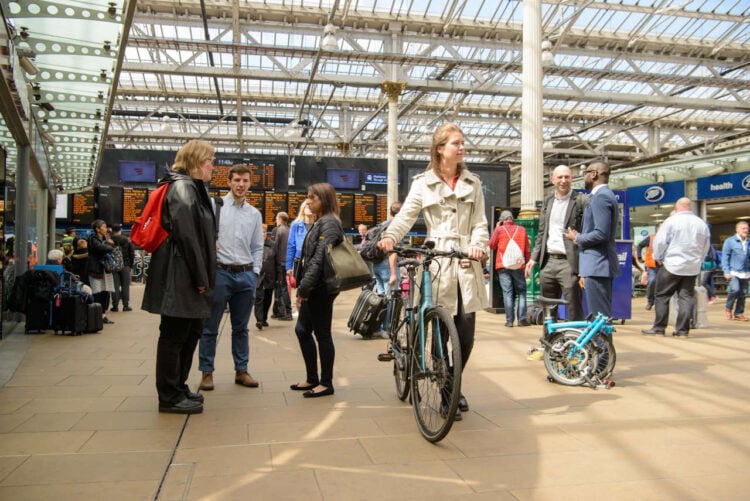John Lauder, the former CEO of Sustrans, suggests that the number of passengers using trains could treble while at the same time journeys by car to stations could be reduced.
John is now employed by ScotRail, and is leading the development of an accessibility strategy ‘A Railway for Everyone' that is soon to be published.
The strategy covers both accessibility and sustainable transport and looks at how people get to stations, and move around them once they are there.

ScotRail recently published its own Sustainable Travel to Stations (STtS) strategy. That is designed to increase the number of journeys passengers make between local neighbourhoods and stations by using healthy and sustainable modes of transport, including walking, wheeling, cycling, on-demand transport, and the bus.
John spent nearly 20 years at Sustrans leading its development of active travel policy, funding, and delivery, and now at ScotRail, he is responsible for developing STtS in collaboration with key stakeholders. Among the stakeholders consulted were local authorities, regional transport partnerships, bus and coach operators, connectivity commissions, and planning bodies.
The aims of the new accessibility strategy are designed to focus on ways to:
- get to a station by active or sustainable transport;
- move around a station with step-free access while enjoying a safe and welcoming atmosphere;
- move from platform to platform without using steps;
- achieve level boarding on and off a train.
The practical guide has been designed so that it provides helpful advice for anyone tasked with assessing, planning, and delivering properly integrated railway stations. The guide is also suitable for anyone involved with planning new stations, transport planning, and how Scotland moves towards an integrated transport system.
- The Sustainable Travel to Stations strategy is available online here.
- And an easy-to-read version is also available here.
- ScotRail has also published a Practitioner's Guide to the strategy which can be found here.
John said: “I am looking forward to working with our train operating colleagues, particularly ScotRail, focusing on a seamless journey from front door to seat. By better integrating Scotland's stations into the communities they serve, we not only improve access to public transport, but we also increase the opportunity to travel sustainably and improve safety and social justice.”
“Getting to the station is, of course, only one part of the challenge, ticket prices and fare boundaries, are also an element. But in terms of accessibility, it's crucial that the entire journey – leaving home to sitting down – is considered.”
To support this aspect, John has developed a practitioner's guide for those working in local government, regional planning and transport, community groups operating near stations, and the wider rail industry.
Scott Prentice, ScotRail Head of Business Development, said: “Supporting a more integrated transport network in Scotland is a key focus for ScotRail because we know that journeys don't start and end at the train station.
“We've delivered a massive investment in station access and transport integration in recent years as we work to support environmentally-friendly travel across Scotland, well beyond the end of the railway tracks.
“We look forward to continuing our work with Sustrans, and partner organisations that link modes of transport together, such as local authorities, Regional Transport Partnerships, bus companies, and bike hire firms to make it much easier for people to choose an integrated sustainable journey.”
Is it time for cyclists to be able to take their machines onto a bus (plus trailer) type of transport on route to the railway station?
Since the effects of Beeching, not every cyclist lives a short cycling distance from a railway station.
Cars are catered for in their railway station Parkways or Park and Ride, but the cyclist is advised to travel along the former rail routes in all kinds of adverse weather.
Upon arrival at the rail destination, the cyclists make their way to their final destination. Again if travelling in Beeching railway track “deserts” , onto a further bus device.